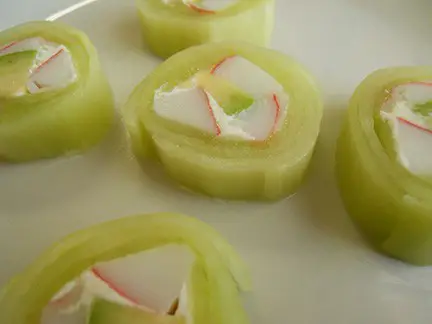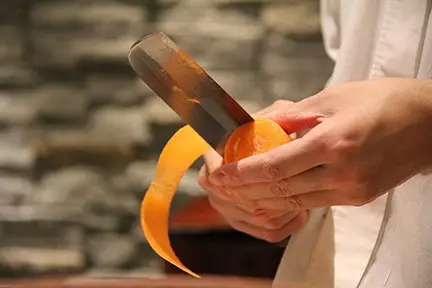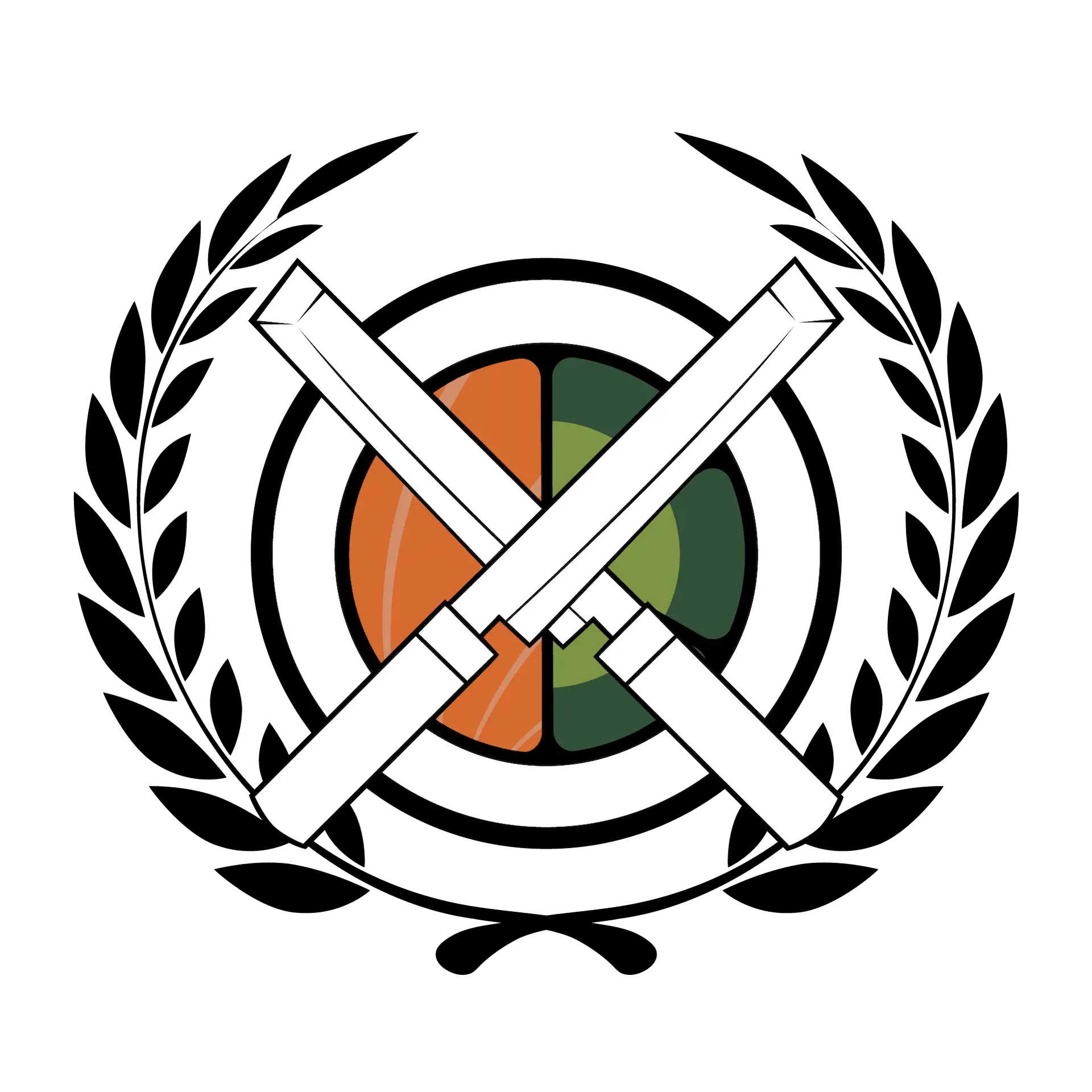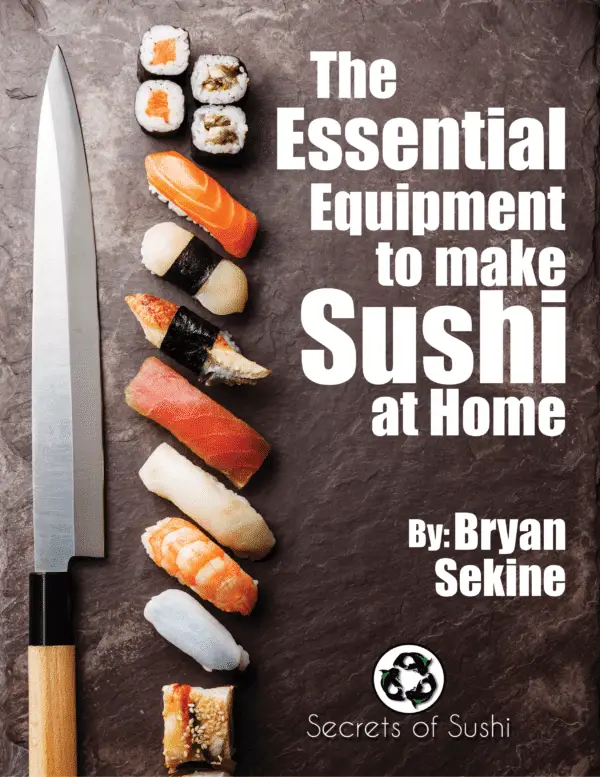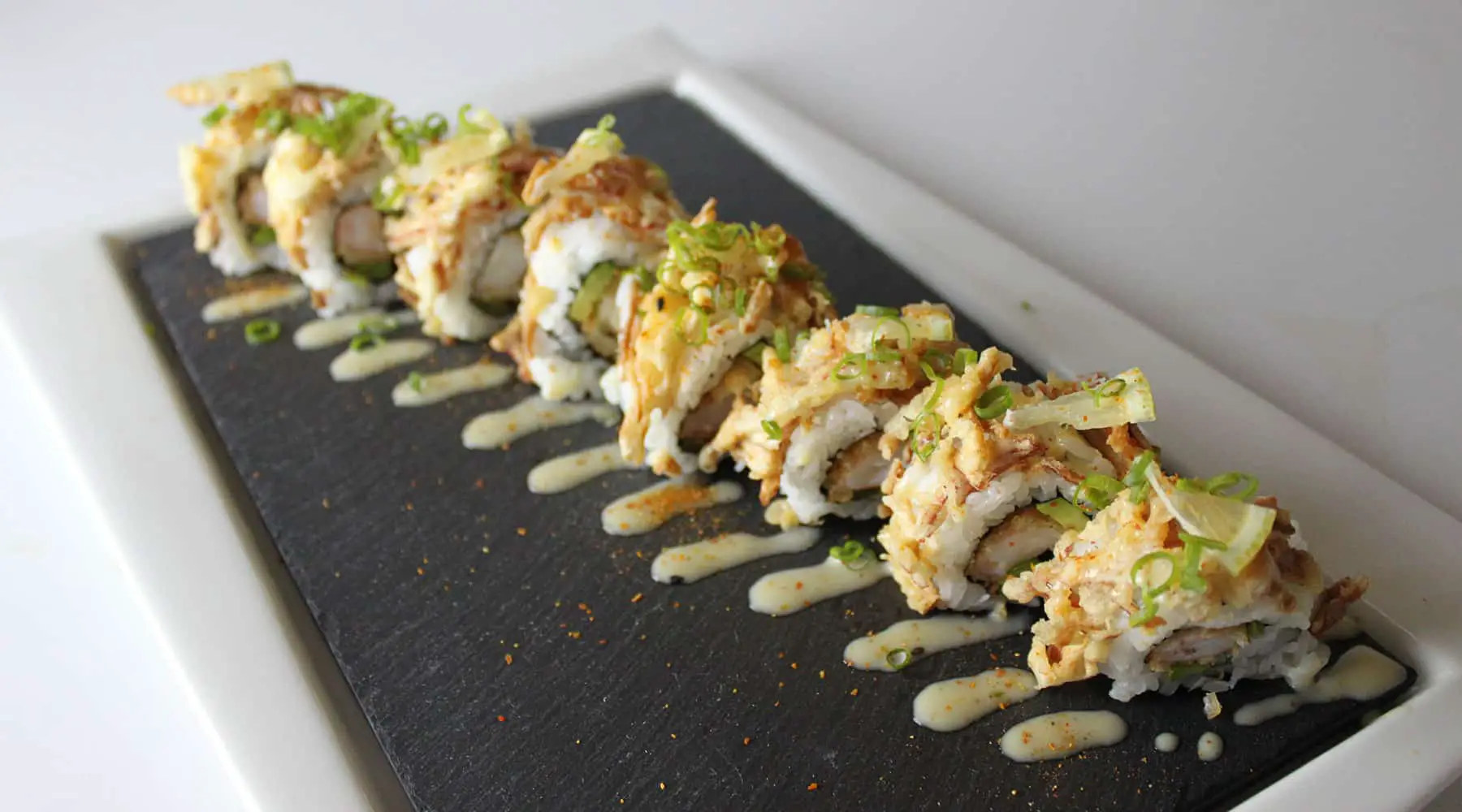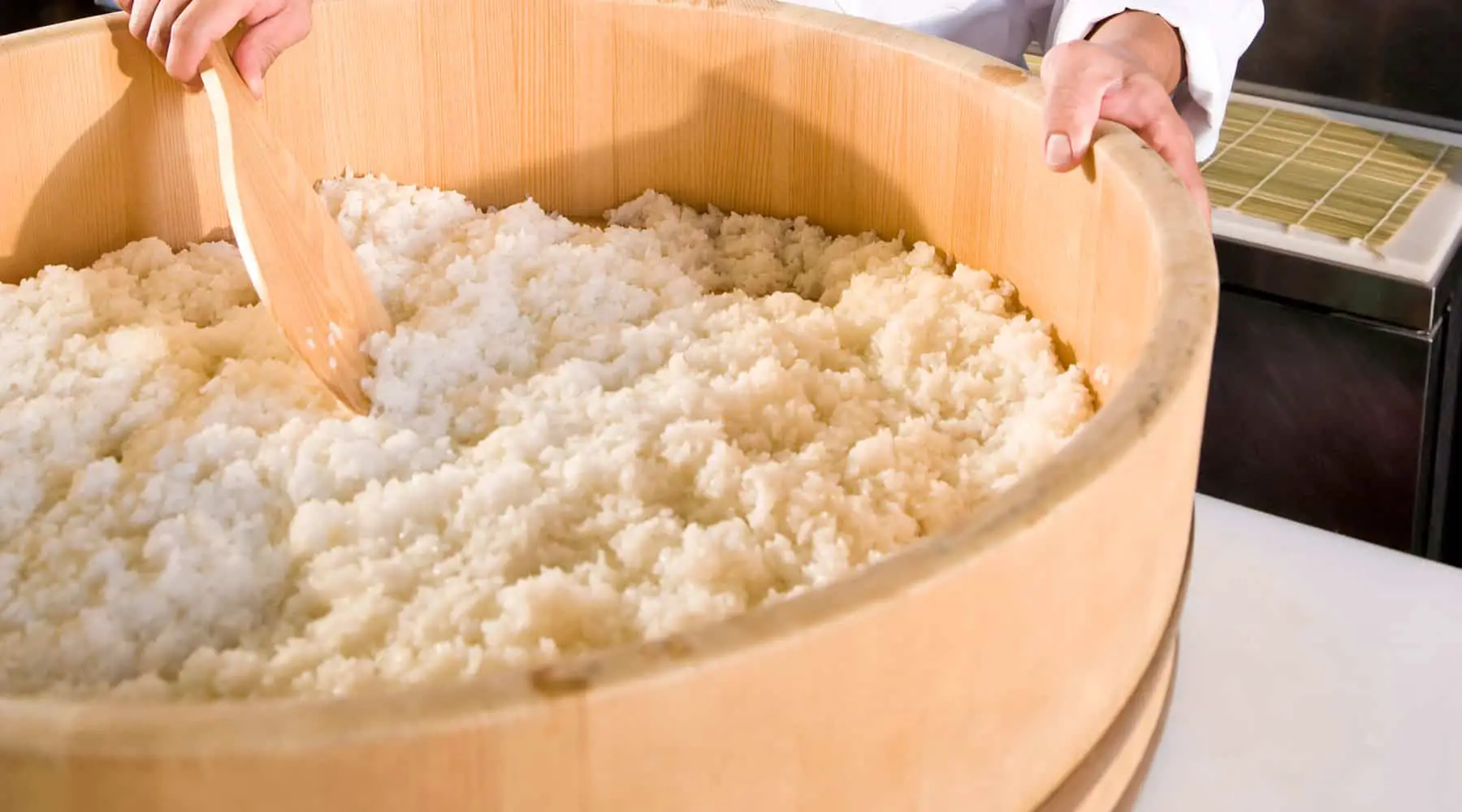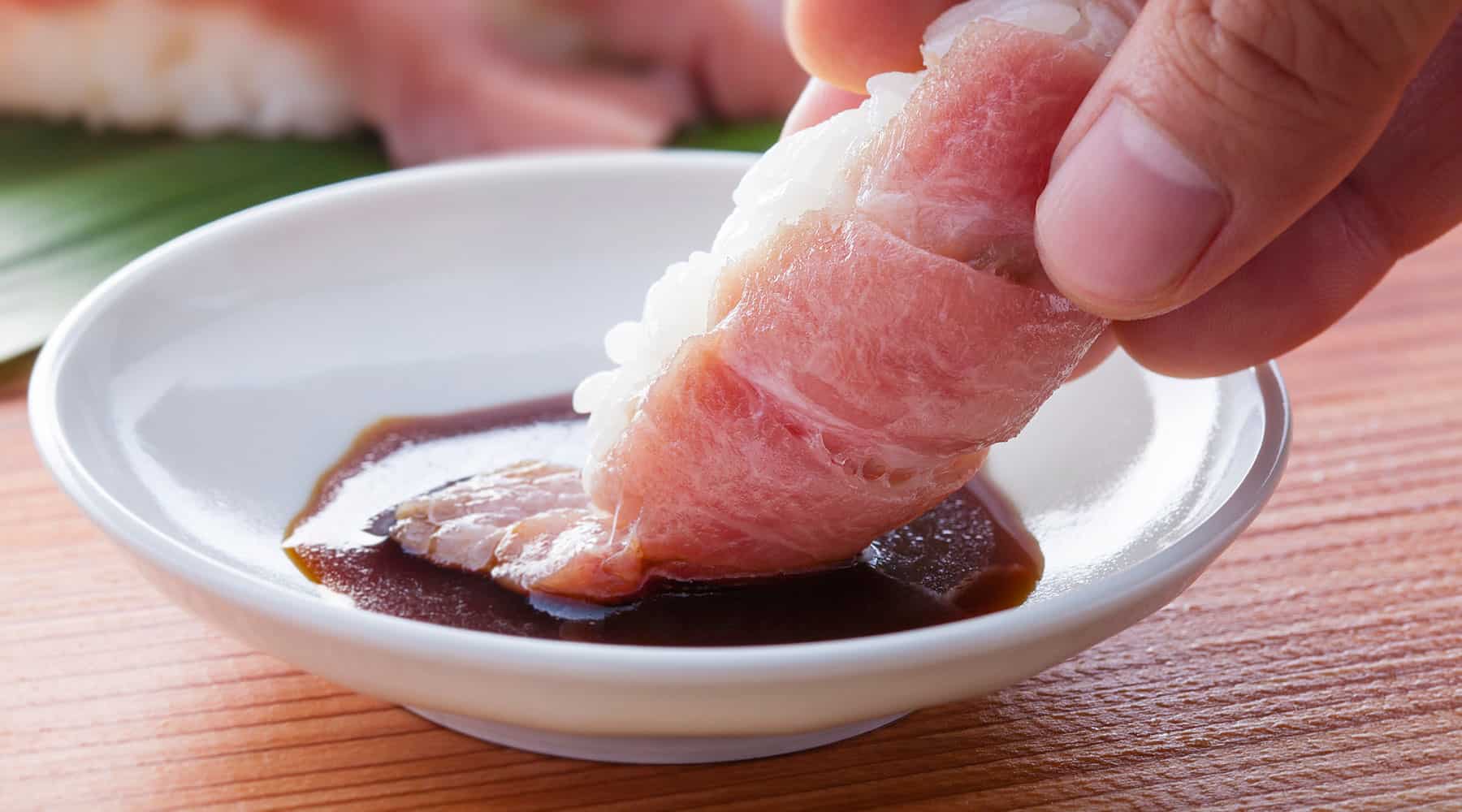Usuba
Like other sushi knives, the Usuba is a single beveled (or single-edged) knife. As a disclaimer, this is an accessory knife for the casual sushi chef. It is not required for in-home use, but rather for serious chefs looking to pursue a career in Japanese culinary arts. At home, it is perfectly acceptable to use a standard chef’s knife for any of the jobs described below.
The name of this knife literally translates to “Thin Knife.” It is handcrafted to be the ideal knife for cutting vegetables. The thinness of the blade is perfect for making precise cuts and peeling.
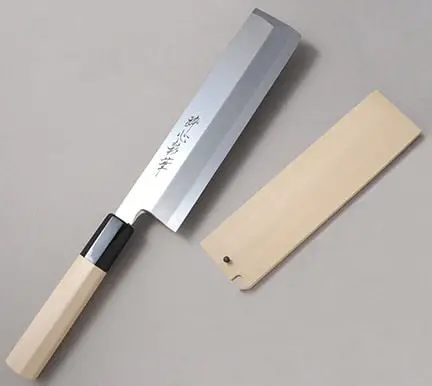
The straight edge helps make complete contact with the cutting board, which also helps when cutting vegetables, fruit, and nori sheets. However, due to its thin design, it is more likely to chip or break if used improperly.
Why are thin blades ideal for cutting vegetables?
While you can cut vegetables with thicker blades, the thinner the cut of a vegetable- the more likely a thick blade will break the cut. Thinner blades are simply more capable of making thinner cuts. If you want to accomplish thin cuts on your vegetables, but don’t want to purchase a dedicated knife for the task, you can achieve thin cuts with a santoku as well!
Why do Japanese people prefer thin-cut vegetables?
Japanese people believe that the thinner the vegetable is cut, the more surface area is exposed to air – enhancing the flavor. It also increases the texture of the vegetables.
Though some American sushi chefs may argue the importance of tasting each ingredient in a roll, it is ultimately up to personal preference as to how thick you make your cuts.
There are two distinct variations of the Usuba:
The Usuba – known for its blunt tip, straight edge, and rounded point.

The Kamagata-Usuba – known for its pointed tip and slightly curved edge (which is ideal for precision cutting).
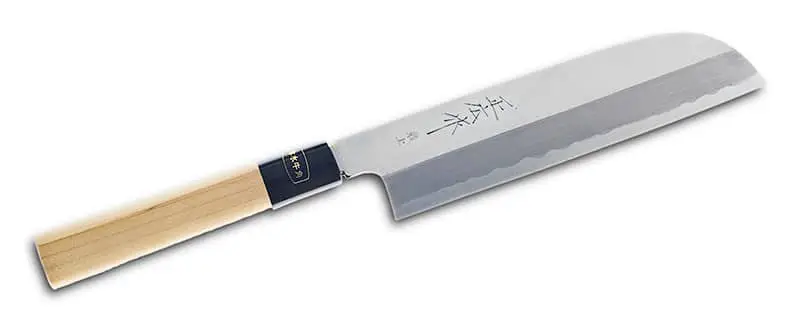
Each version serves the same general purpose and it’s really just personal preference as to which one to use.
Both variations can be made with a single bevel (which is almost always found in professional restaurants) or with a double bevel (found most commonly in homes). If the knife has a double bevel, it is referred to as a Nakiri Bocho.
The average length of a knife like this is between 6.5″ and 8.5″.
Katsuramuki
This knife is also commonly used to make Katsuramuki – also known as a cucumber wrap roll. This is a term used to describe thinly peeled vegetable wraps as a substitute for using nori and rice. There are many different kinds of vegetables that can be used to create katsuramuki rolls, but cucumber is the most commonly found.
Here are a few examples I found online to help visualize what katsuramuki is:
